Blog>Expert Advice>Buying guide: Helping you to choose your living room lighting
Last updated: 23 September 2024
Buying guide: Helping you to choose your living room lighting
Want to achieve the perfect blend of living room lighting in your home? We share all the tips and tricks you need to create a functional, stylish, and inviting setup.
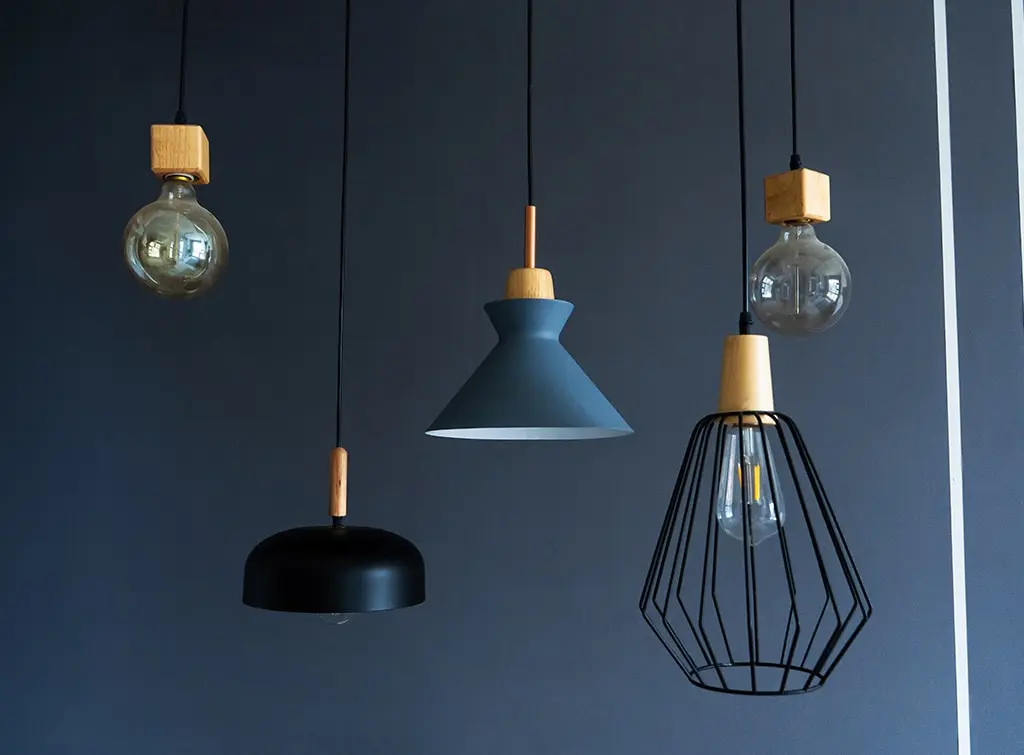
Choosing the right living room lighting will completely transform this integral part of your home.
In this buying guide, we explore how to choose the right combination of lights for your living room depending on its size, layout, and the functions you need the lights to perform.
We also look at the importance of light bulbs, with advice on selecting the right colour and brightness to create the perfect ambience.
The importance of living room lighting
The living room is a hard-working area of the home. It's used for relaxing, entertaining, hobbies, and play.
As you might imagine, each of these activities requires a different mood. And that can only be achieved through effective lighting.
The types of living room light fixtures you select and where you direct the light will play a major role in the look, feel, and functionality of the space.
With layered lighting, your living room will be transformed into a practical, stylish, and inviting space. And we're going to show you how.
See the tradespeople we've checked and recommend for your job
Types of living room lighting
We've touched upon the notion of 'layered lighting', but what does that actually mean?
Put simply, layered lighting uses a selection of different lighting types to create the overall effect and purpose you desire.
The three main types of lighting include:
General lighting (for good, overall illumination)
Task lighting (to help with specific tasks, such as reading)
Accent lighting (to set the mood and tone)
As an example, in a living room, you may choose a ceiling pendant for general lighting, a floor lamp next to an armchair as task lighting, and wall sconces as accent lighting.
Let's look at the range of different light fixtures within each of these categories and where they're best used.
1. General lighting
General lighting, also known as ambient lighting, provides overall illumination for a room, making sure it's evenly lit. Your general lighting will be the primary source of light for your living room.
Ceiling pendants
Ceiling pendants are a popular choice for living rooms. They cast general light over the entire room and act as a focal point.
Best for: All types of living rooms from compact, square-shaped rooms to grander spaces. A single fixture can create a strong focal point in a smaller space, but oversized pendants or chandeliers are best used in larger living rooms or those with high ceilings
Why choose ceiling pendant lights: They make an eye-catching design feature and are available in various colours, sizes, and designs. Statement chandeliers add an elegant and luxurious touch
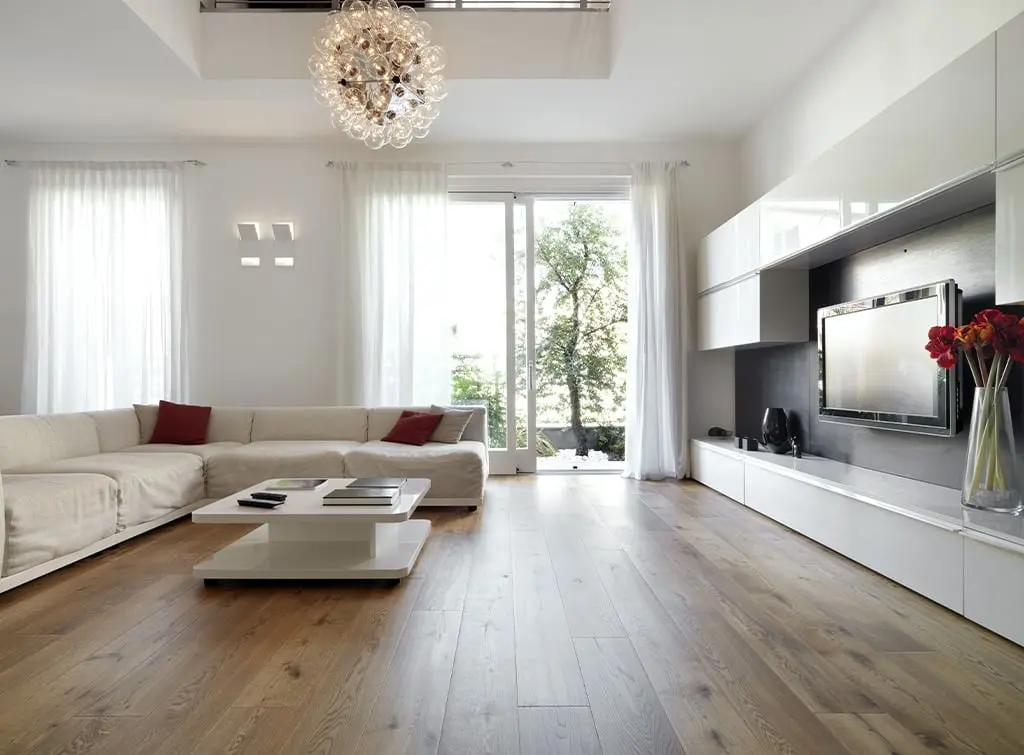
Flush or semi-flush ceiling lights
This type of general lighting is unobtrusive and sits close to the ceiling.
Best for: Living rooms with low ceilings or smaller spaces, or where you wish the lighting to blend in
Why choose flush ceiling lights: They're discreet and practical for living rooms with a low ceiling, providing ample light without taking up too much space. They typically produce a diffused or indirect light, i.e. a 'glow', which is slightly more atmospheric than the direct light of a pendant
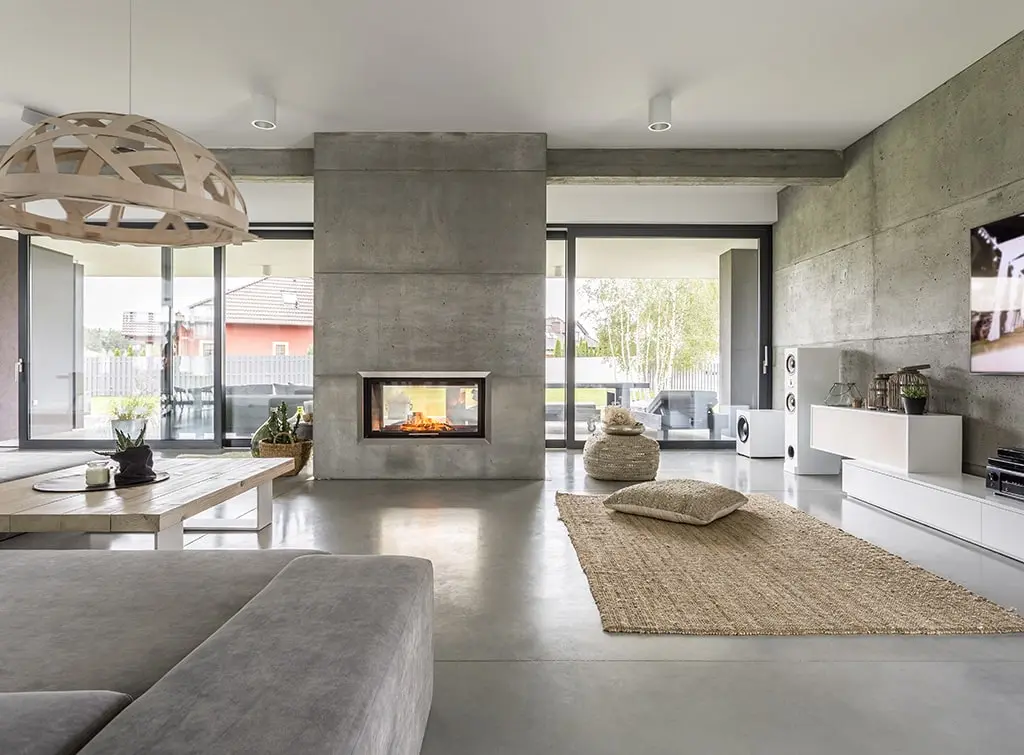
Recessed ceiling downlights
Recessed ceiling downlights are installed into the ceiling itself to provide widespread light distribution in a sleek and modern way.
Best for: Modern or minimalist living rooms, spaces with lower ceilings or limited natural light, or open-plan living rooms. They're also a great choice for longer, rectangular living rooms as they provide uniform lighting across the room, helping to avoid dark spots
Why choose recessed ceiling downlights: They're clean and streamlined, ideal if you want the light source to blend in rather than stand out. They can also be dimmed, which helps to set the desired mood
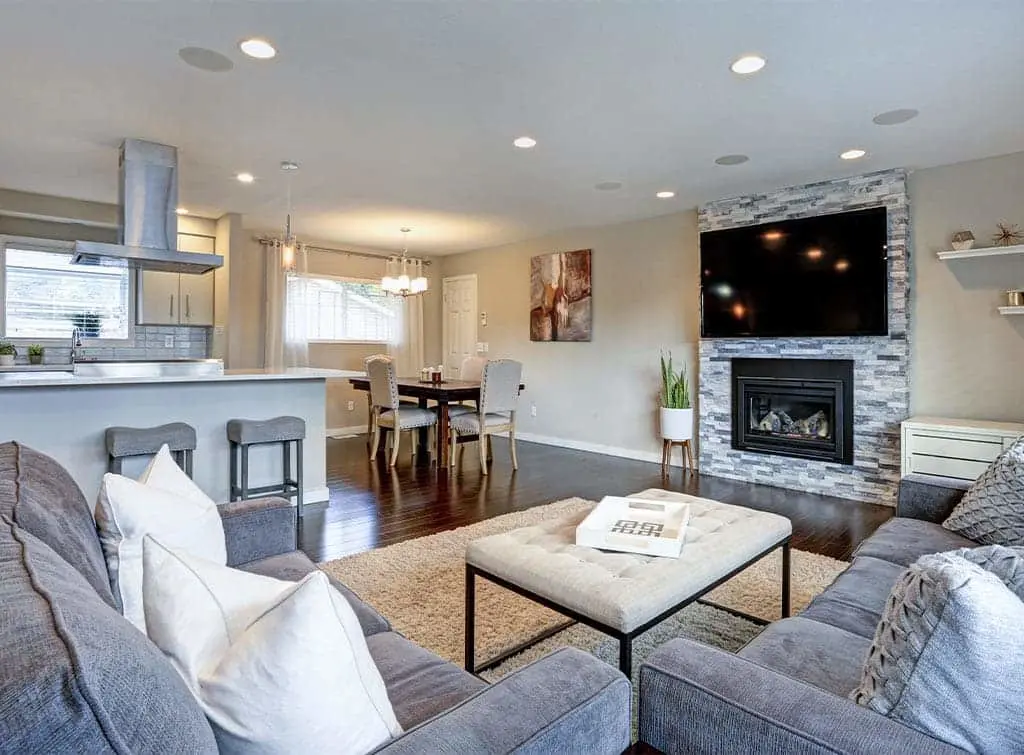
2. Task lighting
Task lighting focuses on specific areas of the room where more light is needed. In a living room, effective task lighting will help to facilitate activities such as reading, working, playing games, or hobbies.
Floor lamps
Floor lamps come in a variety of styles including swing arm, cluster lights, arching floor lamps, and many more. They provide focused light and a decorative touch in a living room.
Best for: Long, narrow living rooms or open-plan living rooms where certain areas need extra light or 'zoning'. They're also perfect for adding focused light to areas where activities take place, for example, next to an armchair or over a table
Why choose floor lamps: These living room light fixtures are flexible and versatile - a great way to add sufficient lighting where needed without altering existing light fittings. As well as serving a practical purpose, they also add an ambient glow
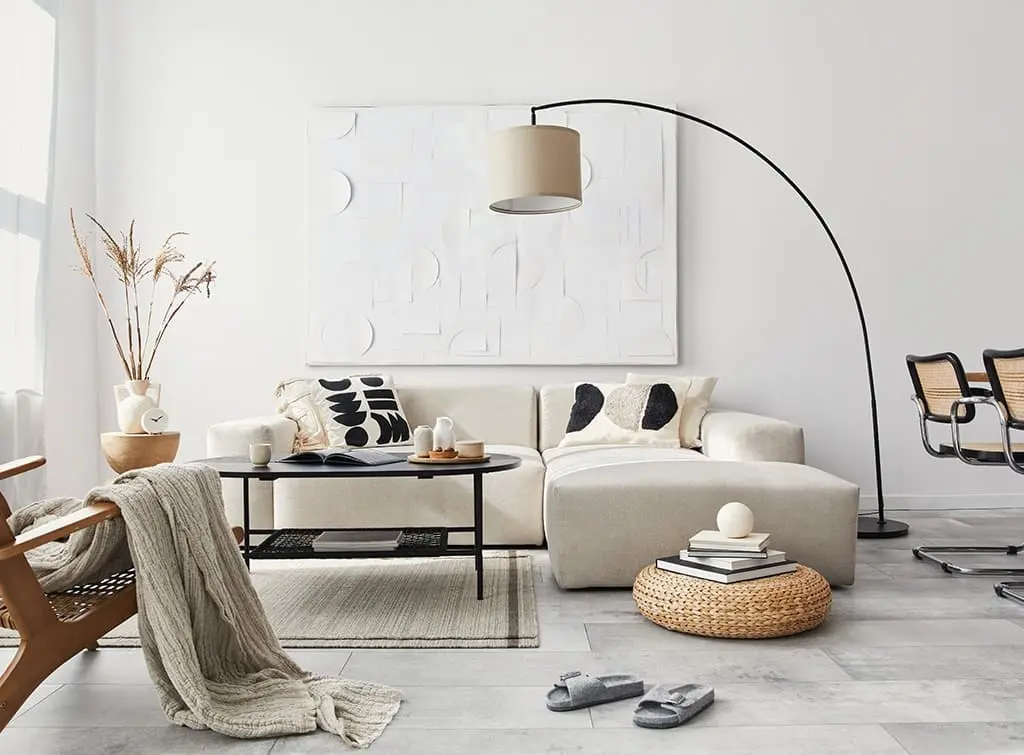
Table lamps
Table lamps can be dotted around a living room to provide additional light where needed.
Best for: Side tables, console tables, or coffee tables next to seating areas
Why choose table lamps: As with floor lamps, table lamps come in a wide selection of styles and designs to enhance a living room aesthetic. They provide focused light for tasks and a soft glow for a cosy, inviting atmosphere
Tip: If your table lamps or floor lamps have a lampshade, check the colour of its lining. A lampshade with a red lining, for example, will reflect this colour light around the room.
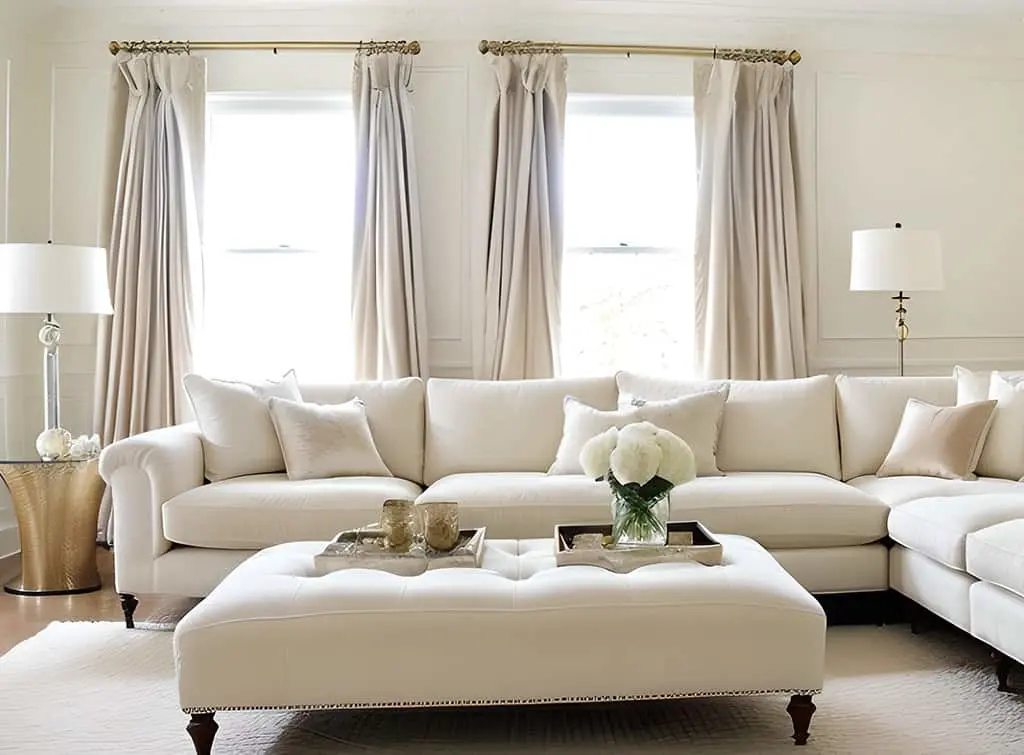
3. Accent lighting
Accent lighting adds atmosphere to your living room. It can also be used to draw attention to specific areas or design features.
Wall sconces
Wall sconces are fixed to the wall and create a soft glow. They're often used to flank fireplaces, mirrors, or artwork.
Best for: Larger living rooms, long, narrow spaces, or living rooms that don't have ceiling lights
Why choose wall sconces: Wall sconces come in a range of designs to complement any style of interior decor. They create a warm glow, provide visual interest in a larger room, and don't take up any floor space
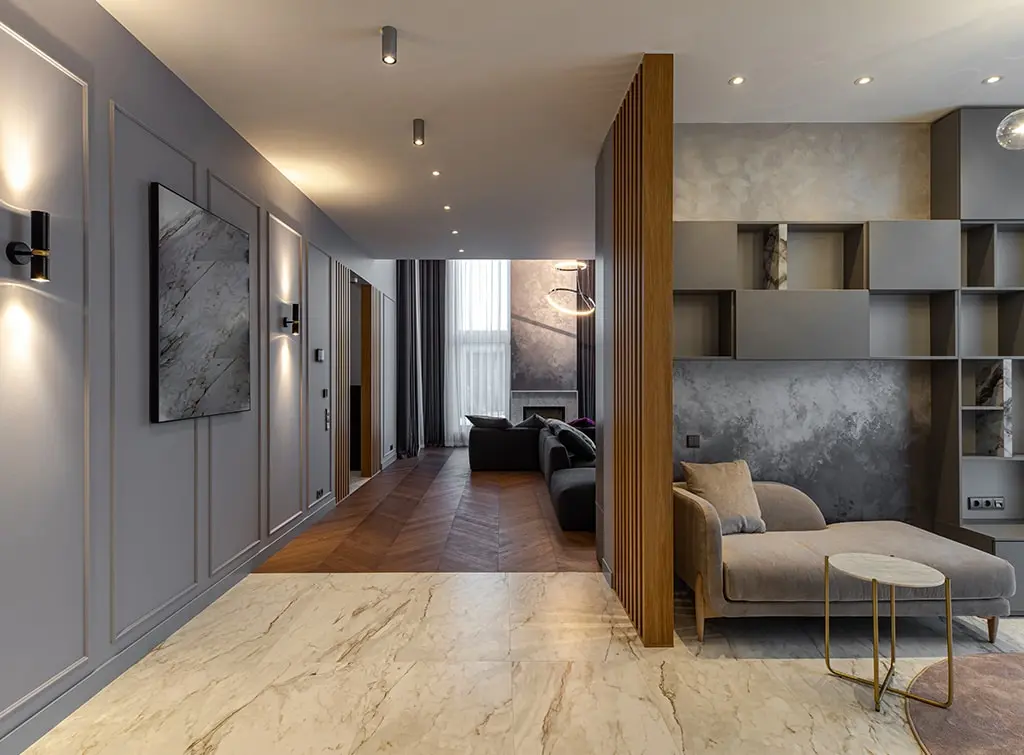
Picture lights
Picture lights are slim, wall-hung fixtures that highlight artwork or design features - drawing the eye to a specific part of the room.
Best for: Illuminating artwork, bookshelves, or architectural details
Why choose picture lights: Picture lights allow you to highlight artwork or specific features while also creating an ambient glow. LED picture lights are best as they don't emit UV or infrared light, which could damage valuable artwork
LED strip lighting
LED strip lights are thin, flexible light strips that can be installed under shelving or cabinetry, behind a TV or media unit, or under furniture to create a warm glow.
Best for: Open-plan living rooms where subtle lighting can be used to blend connected spaces
Why choose LED strip lights: They are energy-efficient and discreet, offering a contemporary way to create ambient lighting without cluttering the space with additional light fixtures
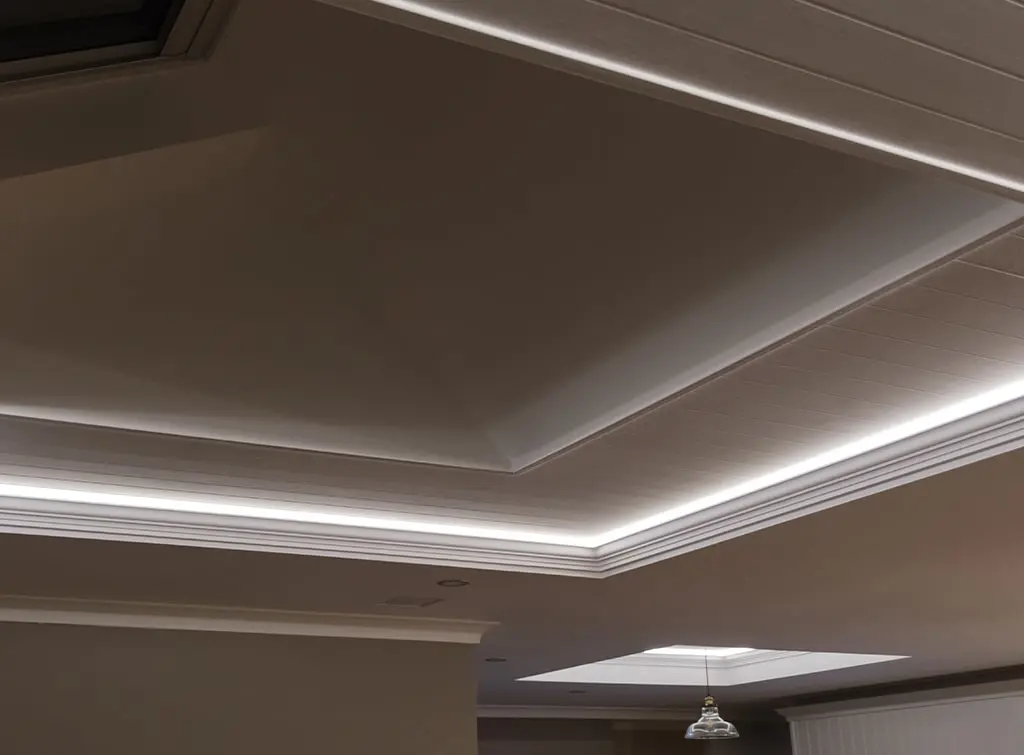
How to choose the best living room lighting for your home
There are several other factors to consider when choosing your living room light fixtures, including room size, layout, and style.
Here, we provide all the details you need to help navigate the best choice of living room lighting for your home.
Style and design
Living room light fixtures are as much about purpose as they are style. Choosing the right ones can be the difference between a cohesive design scheme and something that doesn't feel quite right.
Modern interiors look great alongside chrome or matt black light fixtures
Contemporary living rooms suit sleek, unobtrusive designs
Traditional homes lend themselves well to glass fixtures or warmer metallics such as bronze or copper
The colour of living room light fittings (cables and casing), can either blend with the internal decor, or create a contrast. For example, a black cable and casing create more of a statement in industrial or modern decor, while traditional white would blend into more neutral or traditional interiors.
For design inspiration, take a look at our post on living room lighting ideas:
Living room lighting ideas
Take a look at our living room lighting ideas to help create the perfect ambiance for your space.
Room size and layout
Not all living rooms are created equal. Some are square and compact, others are long and narrow. Nowadays, it's not uncommon to have an open-plan living room, kitchen, and diner.
As you might have guessed, the size and layout of your living room will impact the lighting best suited to your space.
Long, narrow living rooms: Use a combination of ceiling lighting and wall sconces to spread light across the room. A central pendant light can act as a focal point, while floor lamps can help to brighten any dark corners
Square, compact living rooms: Choose a central ceiling pendant light - perhaps even a statement fixture - and complement it with table lamps to add warmth. In a smaller space, avoid cluttering the room with too many light fixtures
Large living rooms: Install recessed ceiling lights for widespread illumination alongside ceiling lights for greater visual interest. Add wall sconces and floor lamps to layer the lighting and create zones
Rectangular living rooms: To evenly light the full length of the room, install recessed ceiling downlights at regular intervals. Then add table or floor lamps around seating areas for balance
Open-plan living rooms: Lighting zones will help to define different areas in an open-plan space. Place a pendant light above the dining table or kitchen island and add floor lamps in seating areas for a cosy feel
Handy living room lighting measurements
The positioning of your living room light fixtures is another important part of creating a balanced, well-lit space. It will also help to avoid dazzling anyone who's trying to relax in your living room!
Ceiling pendant lights: The bottom of a ceiling light fixture should be at least 7ft from the floor - lower if placed over a coffee table
Recessed ceiling downlights: Space downlights approximately 3-5ft apart for even light distribution and approx. 2ft away from the walls. Use fewer lights in a smaller room for a softer glow
Table lamps: Aim for the bottom of the lampshade to be at eye level when sitting down
How many lights should you have in a living room? As a guide, aim for one source of general lighting per 8-10 sq ft of ceiling space and layer this with task and accent lighting (scroll up to revisit these options if needed).
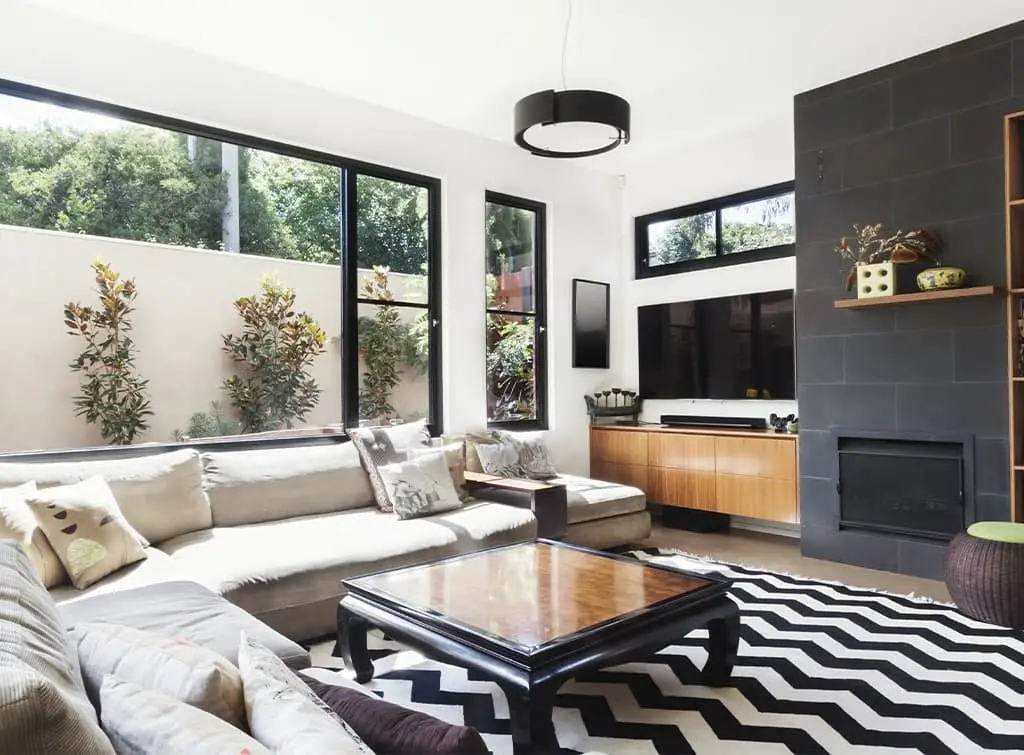
Conservatory lighting
If your living room opens into a conservatory, you might be wondering how best to extend your choice of lighting into this space.
The good news is, that it's fairly straightforward to complement your living room lighting with your conservatory light fittings to create a cohesive flow.
Conservatory downlights can be installed in modern conservatories with a dimmer switch to avoid glare bouncing off the glass
Ceiling fans with lights offer a dual-purpose
Wall lights are great for adding ambience
Table lamps and floor lamps are a flexible and versatile solution
Light bulbs
LED bulbs
LED bulbs are the go-to choice for homeowners, being energy-efficient, safe, and long-lasting. They're available in several different shapes and brightness levels, making them incredibly versatile.
Colour temperature
The colour of your light bulb will determine the ambience you create.
In a living room, warm white (2,700-3,000K) is generally preferred for a cosy, inviting atmosphere.
Lumens
Lumens refers to the brightness of the bulb. For a living room, plan for around 100-150 lumens per m². A living room adjacent to a conservatory, flooded with plenty of natural light, may need less.
Dimmer switches
Dimmer switches are perfect for living rooms, giving you the ability to adjust the intensity of the light depending on the time of day and the activity.
See the tradespeople we've checked and recommend for your job
Energy efficiency and smart lighting
For convenience and energy-efficiency, consider smart lighting.
Controlling your living room lights from an app, you can set them on a timer, change their colour, and brightness. You can even manage the lights remotely, turning them on and off while you're away to give the impression someone is home.
Safety and IP ratings
Two final, but important considerations, with living room lighting are IP ratings and fire protection.
IP ratings
IP (Ingress Protection) ratings measure a fixture’s ability to withstand moisture and dust.
The two numbers following ‘IP’ indicate the level of protection. IP20 is usually adequate for living room lights as they don’t typically experience a lot of dust or moisture.
Fire protection
If you have recessed ceiling downlights installed in your living room, check they are fire-rated. This means they are designed to restore the fire integrity of the ceiling by sealing off the hole where the downlight is installed.
Contact or pay a trade through Checkatrade and you’re covered by our 12-month guarantee of up to £1,000*

How much does living room lighting installation cost?
It's always advisable to get a selection of quotes for electrical work in your home. As a guide, expect to pay around:
£300 - £500 per project for supplying and installing downlights
£120to hang a chandelier
Electricians tend to charge between £45 - £60 per hour. However, for an accurate quote, contact a qualified local electrician.
Do you need help with the rest of your living room decor?
At Checkatrade, we help to connect homeowners with quality tradespeople across the UK.
So if your living room lighting upgrade is part of a wider renovation, let us help you to find reliable trades, including painter and decorators, flooring specialists, smart home automation experts, and more.
Search for the trades you need in our leading directory.
See the tradespeople we've checked and recommend for your job
Request a quote for your living room lighting project
For safe and compliant installation of your living room lighting, always hire a qualified electrician. Get direct quotes from our approved members through our request a quote feature.

On Checkatrade, you'll only find trades who meet our high standards and pass up to 12 checks.
Key takeaways
A layered living room lighting scheme includes a combination of general, task, and accent lighting
Choose from a selection of living room light fixtures including ceiling downlights, pendants, wall sconces, LED strip lights, table and floor lamps
The size and layout of your living room will impact the lighting best suited to your space
Always hire a qualified electrician to install your living room lighting
Electricians tend to charge between £45 - £60per hour
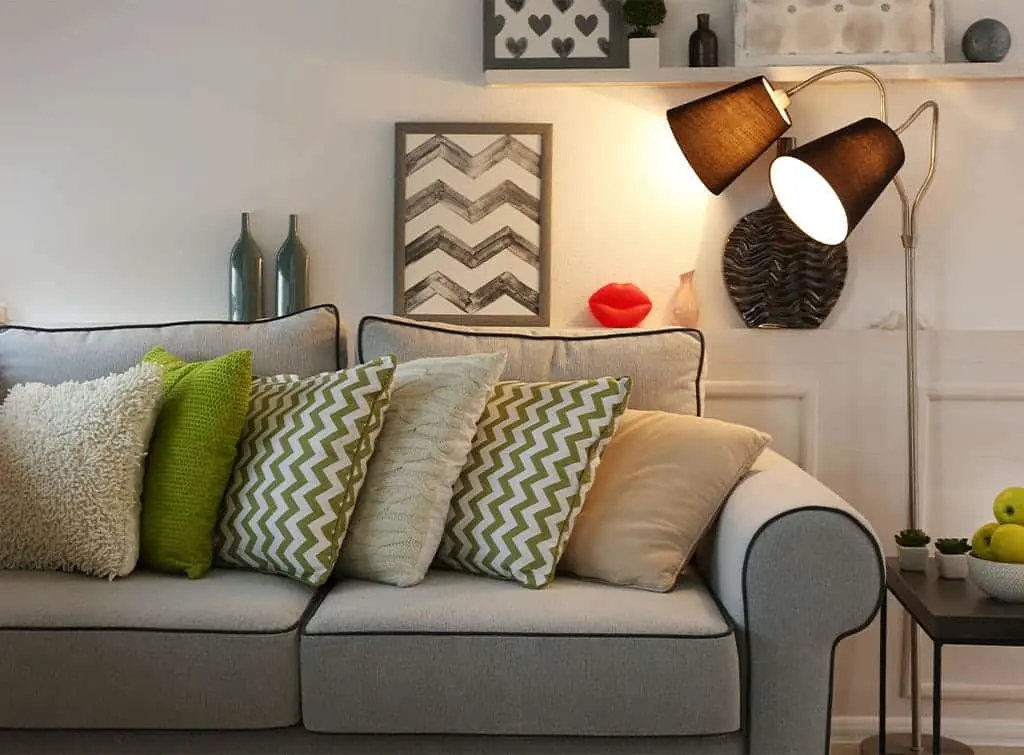
Find a qualified electrician in your area
Search your postcode below to find highly rated tradespeople in your area.
See the tradespeople we've checked and recommend for your job
FAQs
What lighting is best for a living room?
No one type of light's best for a living room - effective lighting is created by using a combination of general, task, and accent lighting. For example, recessed ceiling downlights for general lighting, a floor lamp next to an armchair for reading (task lighting), and wall sconces for ambience (accent lighting).
How can I make my living room lighting feel cosier?
Choose from a selection of different living room light fixtures to create a cosy feel. This includes ceiling downlights, pendants, wall sconces, LED strip lights, table and floor lamps. The size, dimensions, and layout of your room will influence which type of fixtures are best for your living room.
How many downlights do I need for a living room?
This depends on the size of your living room. A typical living room needs a combination of general lighting - such as one central pendant or 4-6 recessed ceiling downlights - along with task and accent lighting such as table lamps and wall sconces.
Should I use dimmer switches in my living room?
Yes, dimmer switches are perfect for controlling the brightness of your living room lighting, helping you to set the mood or the level of lighting needed for different activities.
What type of light bulb is best for living rooms?
LED bulbs are the go-to choice for homeowners, being energy-efficient, safe, and long-lasting. Aim for 'warm white' bulbs (2,700-3,000K) for a cosy glow.
See the tradespeople we've checked and recommend for your job
See the tradespeople we've checked and recommend for your job



